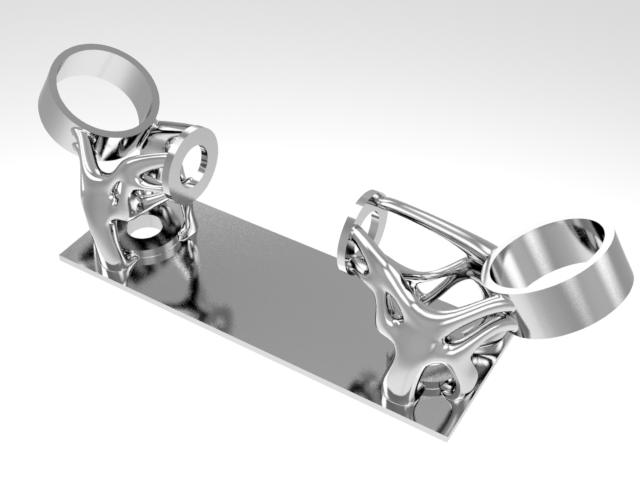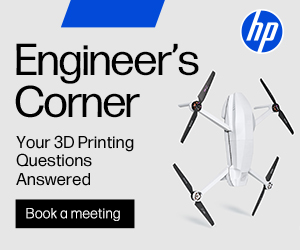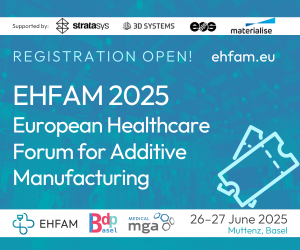Metal 3D Printing Sustainability to Be Studied by Yale via $100K AMGTA Grant
“Industrial ecology” might sound like an oxymoron, but it’s also an extremely important framework for estimating the long-term sustainability of the business models fundamental to any economy’s critical infrastructure. Yale’s Center for Industrial Ecology is one of those rare “centers” these days that may actually truly be the center of what it purports to be the center for. Thus, it’s quite momentous for the 3D printing industry as a whole that the Center for Industrial Ecology recently received $100,000 from the Additive Manufacturer Green Trade Association. The money will be used to do life-cycle assessment (LCA) research for comparative analyses of the sustainability of 3D printed metal components as compared to their conventionally-manufactured counterparts.
A hundred grand may not seem like much at this point in the history of an industry where throwing around millions of dollars has become so commonplace. But every phase of investing is different: the thing to pay attention to isn’t necessarily the size of the investment, especially in the purely R&D stage. It’s just as important to pay attention to earlier rounds of research, and in this sense, the AMGTA is certainly putting its money where its mouth is. In the trade association’s first report on the same subject, published about a year ago, the AMGTA concluded by recommending the exact type of studies it has just funded at Yale: LCA research, especially related to technologies like binder-jetting.
Essentially, the point of LCA research is to measure the environmental impact of a product at every phase of its existence. For instance, Dutch researchers published LCA assessments on 3D printing concrete in the summer of 2019, finding that the 3D printed concrete molds generally performed better, but weren’t necessarily more environmentally friendly to produce. This sort of data is indispensable to the future of the industry, not only for highlighting which areas need to be improved to make the technology viable for commercial purposes, but – just as critically – for highlighting the areas that should be paid attention to by other researchers.
 This Inconel 718 aircraft-engine bracket, redesigned and optimized for AM by Sintavia as a test project to explore the environmental impact of AM, offers a 20-percent weight reduction over the original part, with a 50-percent increase in durability. The longer-life part can cut jet-fuel usage dramatically, according to Brian Neff, Sintavia founder and CEO.
This Inconel 718 aircraft-engine bracket, redesigned and optimized for AM by Sintavia as a test project to explore the environmental impact of AM, offers a 20-percent weight reduction over the original part, with a 50-percent increase in durability. The longer-life part can cut jet-fuel usage dramatically, according to Brian Neff, Sintavia founder and CEO.So, the fact that the AMGTA found in the aforementioned study from a year ago that 3D printing isn’t equally sustainable in all areas of its use, means that the money at Yale will probably be best furthering what AMGTA has already found: that the technology’s most promising use for sustainability purposes, especially concerning metal AM (like what will be studied with the fund at Yale), is in the aerospace sector. This is especially true considering the governor of Connecticut – where Yale is located – recently announced that six companies in the state, including aerospace firms Burke Aerospace and Beacon Industries, will be receiving $100,000 matching grants for any investment into new AM equipment equaling or surpassing $100,000. Thus, aside from being such a distinguished institution both inside and outside of the 3D printing field, Yale is perfectly situated to study the sustainability of metal AM in the air and space industry.
It’s especially notable that AMGTA is collaborating with Yale, considering the joint study that the institution did with two other universities in 2018, which said it was “too soon” to call AM a “green technology”. This means that the trade association is serious about changing that, and is willing to make the investment to do so. Moreover, setting a precedent in the research field is especially important when it comes to LCA assessment: since the quality of the data is so dependent on the types of studies done, studies are affected, even more than in most other kinds of research, by the previous studies of other researchers.
Such a large proportion of the 3D printing industry is still in the pure research phase that any continuity of results will surely resound more widely than it would in fields with greater longevity, which are easier to test. If Yale reinforces the results of AMGTA’s previous study, it seems likely that we’ll start to see more, similar LCA assessments in the near future. At this point, all information that can be garnered on the subject will be welcome, because the sooner more is known about AM’s sustainability in the present, the easier it will be to improve it in the future.
Subscribe to Our Email Newsletter
Stay up-to-date on all the latest news from the 3D printing industry and receive information and offers from third party vendors.
Print Services
Upload your 3D Models and get them printed quickly and efficiently.
You May Also Like
Ohio Ordnance Works Partners With Velo3D on Metal 3D Printing for Defense Initiative
Metal 3D printing firm Velo3D announced that it has partnered with Ohio Ordnance Works (OOW), a Class III arms manufacturer. The company makes the REAPR machine gun and SAW, BAR,...
Broad Spectrum Additive at the US Air Force
If we look at how Air Forces around the world use additive manufacturing, a lot of the attention is focused on future possibilities in hypersonics and next-generation aircraft. Beyond the...
EOS Releases Medical Device Master File for M290 3D Printer
Laser powder bed fusion (LPBF) firm EOS has released a Medical Device Master File that will make it easier for customers to achieve regulatory success. The file will essentially be...
Push Button Metal 3D Printing for $50,000?
In 2021 we wrote an article about “Push Button Metal, the low cost metal 3D printing evolution we are not talking about.” In it, we talked about One Click Metal,...





























